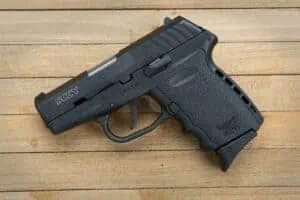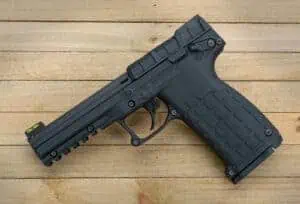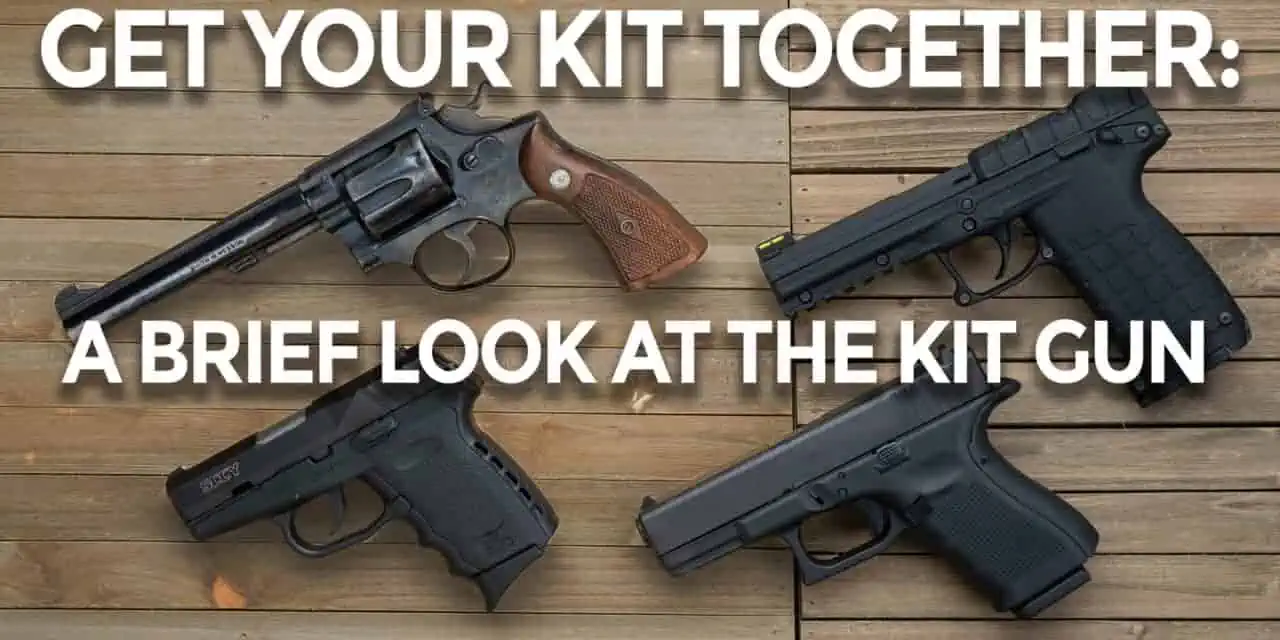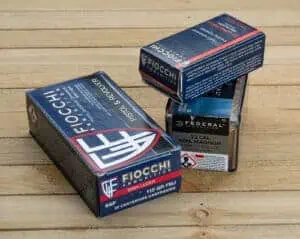Let’s Look At The Kit Gun
A firefighter friend of mine told me once that there are three reasons why people run back into a burning home once they’re safe, and they all start with “p”: People, pets, and photos. Myself, though, I’d probably add a fourth item to the list, which also starts with “p,” a pistol. Not just any pistol, though, but a five-pin Model 17 .22LR Smith & Wesson revolver that originally belonged to my father-in-law before he passed away. He was an avid outdoorsman and owned a number of guns, but the .22 revolver was the only pistol he owned. After he passed away, I wondered why he chose that gun in particular to own. It turns out that the Model 17 is a prime example of a “kit gun,” a sort of general-purpose, do-it-all handgun for outdoors use.
At first glance, you’d think that a kit gun would be a firearm that came unassembled, like a gun you’d find at IKEA or something. The phrase “kit gun,” though, has a different origin. “Kit gun” is derived from the fact that you packed up your “kit” to go on the trail or on a hike. Your “kit” is the stuff you took with you when you ventured out into the great outdoors. Think of it as your everyday carry gear for the days you’d go out hiking. But what differentiates a kit gun from an ordinary, everyday carry pistol? Let’s take a look.
What is a kit gun?
Let’s pause for a moment to talk about another kind of gun, the scout rifle. In recent years, there has been a renewed interest in this gun, which is a general purpose, all-in-one bolt action rifle. A scout rifle isn’t the most lethal rifle on the planet or the most accurate. What it is, though, is the rifle to have if you can have only one. A scout rifle doesn’t perform any one task exceedingly well. What a scout does, though, is perform a bunch of tasks well enough to accomplish the task at hand. Think of a scout rifle as a multitool. Are there better options for pliers, knives, and screwdrivers than a multitool? Yes. Is it easier to carry around one gadget than three different gadgets? Also yes.
Now pick up everything we talked about scout rifles and multitools and apply them to a handgun in the outdoors, and you have a kit gun. A kit gun is not your primary gun. That’s what your rifle or shotgun is for. A kit gun is not necessarily for self-protection, but it should be able to perform that duty if needed. It isn’t for hunting, but it comes in handy if there’s a wounded animal that needs to be put out of its misery. A kit gun should also be a great gun for targets of opportunity on the trail such as rabbits, squirrels, and other small game. Because they are meant for outdoors use and long hikes looking for game, a kit gun shouldn’t weigh that much. Above all, a kit gun is meant to be a great plinking gun, allowing you friends to while away the hours poking holes in tin cans and similar fun activities.
The Pistol to Have If You Can Have Only One
My father-in law’s Model 17 revolver performs all those roles very well. As it holds just six rounds of .22LR, it’s not the most powerful pistol on the planet. At 39 ounces, it’s also a tad on the heavy side. What it is, though, is stupendously accurate. I’ve put one-hole groups into the target at 25 yards with this gun. That accuracy comes in handy in a plinking gun, and it especially comes in handy for a gun that needs to harvest the occasional rabbit or pop off a gopher in the field.
These days, though, a Model 17 brings a handsome price, with an MSRP of almost one thousand dollars. Is a .22 revolver still the last word in kit guns? What other options might work? Let’s take a look.
 Glock 19 9mm Pistol
Glock 19 9mm Pistol
The Glock 19 is one of the most ubiquitous pistols in the world. Small, powerful, and compact, it’s an excellent self-defense gun. At just over 21 ounces unloaded, it’s also very light. It’s also known for its rugged reliability and tough, polymer-based construction. This, combined with the ballistic advantages of 9mm over .22LR, make the Glock 19 a potentially good kit gun.
There are a few reasons why it may not work as such, though. First off, the Glock is not all that cheap. At $550, it’s not the sort of gun that people in my tax bracket would want to subject to a lot of abuse. Then there’s the plinking/recreation role that a kit gun needs to fulfill. While 9mm is one of the least expensive centerfire cartridges out there, it does cost more per round than .22LR does. Another more subtle argument against the Glock 19 as a kit gun is that 9mm takes up more room that .22LR does. A box of 50 9mm rounds is much larger than a box of 50 .22LR rounds. This becomes important when you’re carrying all your gear into the woods with you and everything has to fit into your backpack.
Sccy CPX-2 9mm Pistol
 At first glance, an inexpensive 9mm pistol like the Sccy CPX-2 is even less suitable to be used as a kit gun than a Glock 19. However, the Sccy has some advantages over the Glock. It doesn’t cost much, and it has a terrific, no-questions-asked warranty. These are two nice features to have in a gun that may take a lot of abuse. It’s also smaller than the Glock 19, making it easier to carry around with you. I have several friends who own a Sccy or a similar gun and use them as “tackle box guns,” a role that is quite similar to the role of a kit gun. A tackle box gun is just something to have with you in the offhand chance you may need a gun.
At first glance, an inexpensive 9mm pistol like the Sccy CPX-2 is even less suitable to be used as a kit gun than a Glock 19. However, the Sccy has some advantages over the Glock. It doesn’t cost much, and it has a terrific, no-questions-asked warranty. These are two nice features to have in a gun that may take a lot of abuse. It’s also smaller than the Glock 19, making it easier to carry around with you. I have several friends who own a Sccy or a similar gun and use them as “tackle box guns,” a role that is quite similar to the role of a kit gun. A tackle box gun is just something to have with you in the offhand chance you may need a gun.
There are some disadvantages to the Sccy, though. Because it has a long trigger and a short sight radius, it’s not as accurate as the Glock at longer ranges. This probably isn’t that big of a deal if you’re plinking cans around the campfire. However, if you’re wanting to put a round into a rattler before he becomes a problem, accuracy suddenly becomes very important.
Kel-Tec PMR-30 .22 Magnum Pistol
 The Kel-Tec PMR-30 has a lot of features that make it a good choice for a kit gun. It’s an amazingly light gun, weighing just 14 ounces unloaded. The .22WMR round it fires falls right in-between 9mm and .22LR in terms of power. It’s also quite accurate, turning in tight group sizes in a recent test. In addition to this, the PMR-30 holds up to 30 rounds in the magazine, allowing you to turn a tin can into swiss cheese before you need to reload again. The PMR-30’s low weight means that a fully-loaded PMR-30 will weigh less than an empty Glock 19 or .22 revolver. And as an added bonus, the PMR-30 doesn’t cost that much, which means you can keep one squirreled away in a secure location until you need it.
The Kel-Tec PMR-30 has a lot of features that make it a good choice for a kit gun. It’s an amazingly light gun, weighing just 14 ounces unloaded. The .22WMR round it fires falls right in-between 9mm and .22LR in terms of power. It’s also quite accurate, turning in tight group sizes in a recent test. In addition to this, the PMR-30 holds up to 30 rounds in the magazine, allowing you to turn a tin can into swiss cheese before you need to reload again. The PMR-30’s low weight means that a fully-loaded PMR-30 will weigh less than an empty Glock 19 or .22 revolver. And as an added bonus, the PMR-30 doesn’t cost that much, which means you can keep one squirreled away in a secure location until you need it.
There are, however, three downsides to using a PMR-30 as a kit gun. The first is its reliability. The PMR-30 we shot had a hiccup every 50 rounds or so. This is not a big deal if you’re shooting up cans on a range. However, it can be a very big deal indeed if it’s a defensive situation where your life is on the line. Secondly, 50 rounds of .22 WMR is a bit bigger than 50 rounds of .22LR, so extra ammo weight is once again a problem. Speaking of ammo, the last problem with using a PMR-30 as a kit gun is the cost to shoot it. .22 WMR may be a rimfire cartridge like .22LR, but it does cost more per round than its smaller cousin. The additional cost of .22 WMR vs .22LR means less bang (literally) for your buck when it comes to plinking time.
Old School EDC
In many ways, the kit gun is a product of a different approach to guns than many gun owners of today. Like many of my friends, I see guns as a tool for defending my family and for competition and target practice. Hunting, while fun, is not why I own guns. A defensive pistol is my primary firearm. It’s probably the gun I’ll need to use if (God forbid) I need to use a gun. For me, rifles and shotguns are secondary, even tertiary guns. They’re what I will use if things get really, really bad and my pistol just isn’t enough.
A kit gun, though, is based on the idea that your primary firearm is going to be the rifle or shotgun you’re using while out hunting in the wilderness. Your pistol is there for secondary purposes only, be it smaller game or just shooting up time (and cans) at the campsite. A kit gun reminds us that there are many different ways to enjoy the world of firearms, and most (if not all) of those ways are a whole lot of fun.




When I was a kid I had a S&W bought from a friend in .32-20 that pretty much lived in my backpack. I sold it on my way to college the first time and have regretted it ever since. That role is now filled by a S&W 63 4″ round butt… but for some reason I still miss that old .32-20.